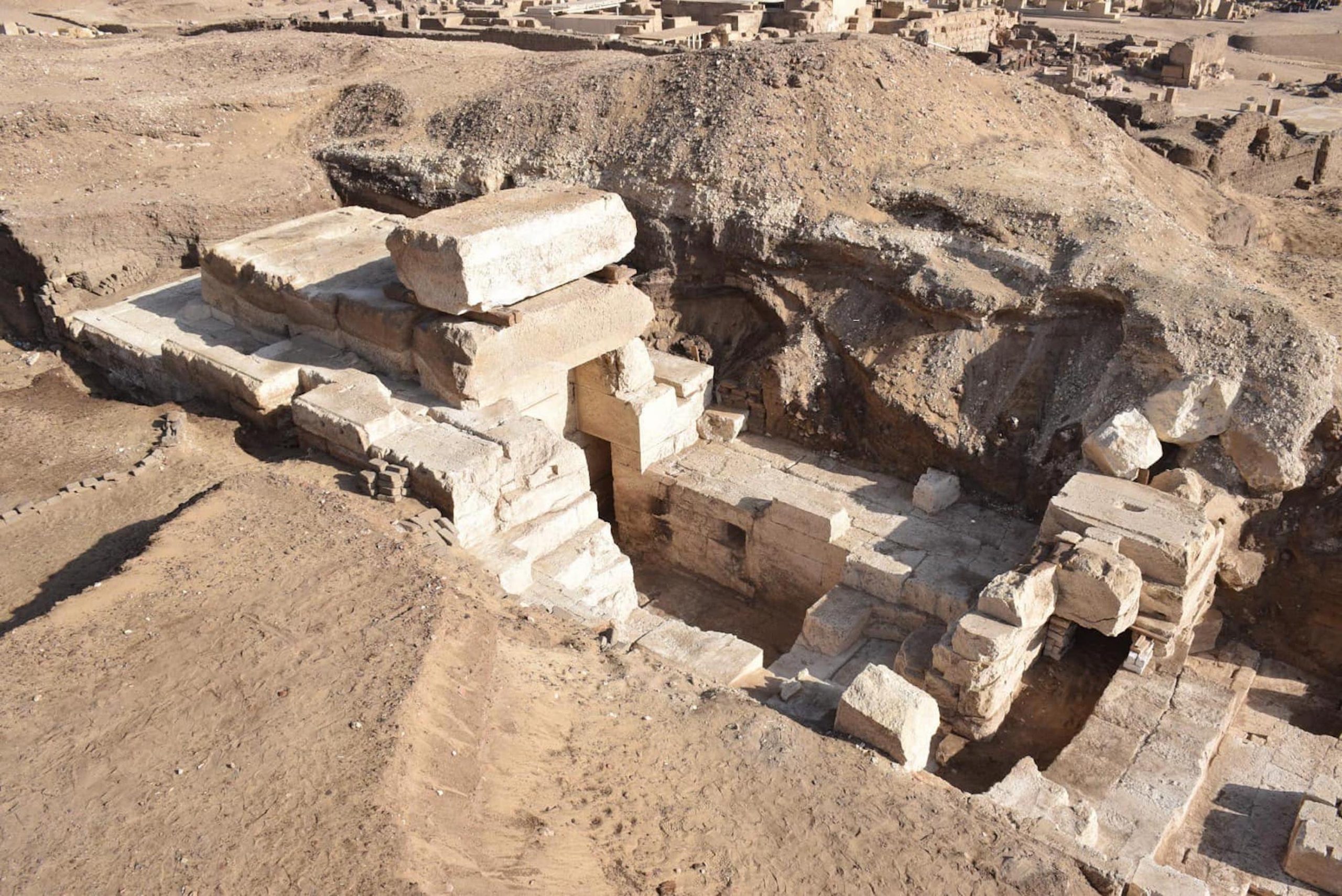
A team from the Egyptian Supreme Council of Archaeology and the German University of Tübengen have fully unearthed the entrance of a well-preserved 2,000-year-old temple in Sohag, Egypt. The Athribis site of the temple covers more than 74 acres and includes a necropolis, several quarries, and a residential settlement in addition to the crucial temple complex itself.
The temple, which is being called the Great Temple of Athribis, was dedicated to an Egyptian fertility god called Min. One of ancient Egypt’s earliest deities, Min was thought to be the embodiment of male sexual fertility. In iconography, he is often holding his erect penis in one hand and the Lactuca serriola lettuce—a popular offering to Min because of its sap’s similarity to semen—in his other.
Temple of Athribis (2024). Image: Egyptian Ministry of Tourism and Antiquities via Facebook.
Hieroglyphic inscriptions and wall engravings of Min were discovered inside the temple, along with designs featuring his wife Repyt, a lioness goddess. The temple was also dedicated to the pair’s son, the child god Kolanthes. Other designs include “secondary astronomical idols acting like celestial stars to measure the hours of the night,” according to the Ministry’s press release.
The Athribis temple dates back to the reign of King Ptolemy VIII. Ptolemy VIII was the son of Cleopatra and Ptolemy V, and reigned alongside his wife and sister Cleopatra II and his wife, niece, and step-daughter Cleopatra III over the course of 54 years between 170 and 116 BCE. Athribis is under the Sohag Governorate and sits southwest of the city of Akhmim and near the villages of Wannina and Nag’ Hamad. The area was known as Triphieion (or Tripeion) to ancient Greeks living in the region after the 7th century BCE.
Ancient Egyptian god Min, the god of reproduction and fertility, illustration from 1824, the New York Public Library. Photo: Smith Collection/Gado/Getty Images
As part of the excavations—led jointly by Mohamed Abdel Badie and Christian Litz—archaeologists have exposed the Athribis temple’s pylon (gate) which measured a huge 167 feet wide and would have originally been a towering 59 feet tall. The pylon is flanked by two towers around 79 feet in height.
The mission also managed to complete the excavation of the temple’s southern chamber, which had been part-discovered during the first decade of the 20th century by an English archaeological team.
In a statement shared on the Egyptian Ministry of Tourism and Antiquities’s Facebook page, the Secretary General of the Supreme Council of Archaeology, Dr. Mohammed Ismail Khaled, “emphasized the importance of this discovery,” which he heralded as a “breakthrough.” This find comes after more than 10 years of work in the Athribis region by the German-Egyptian team, during which over 30,000 ostraca (fragments of pottery or stone featuring engraved writing) have been discovered bearing texts in a variety of ancient dialects.
Carving of Horus (2024). Image: Egyptian Ministry of Tourism and Antiquities via Facebook.
The Ministry’s Facebook post was accompanied by three photographs. Two images show the entrance to the Athribis temple excavated beneath the raised surrounding rock. The third (above) appears to show the Egyptian god Horus with a sun disk above his hawk head. Horus was the god of the sun, sky, and kingship, and his engraving on the interior walls of the Temple of Athribis is surrounded by five-pointed stars.
The annoucement of this new find comes in the same month that another major necropolis was excavated by archaeologists, revealing a tomb filled with “exquisite” jewellery.